Outstanding Mechanical Engineer Awards

Every year, the School of Mechanical Engineering at Purdue University recognizes alumni who have demonstrated excellence in industry, academia, governmental service, or other endeavors related to mechanical engineering. Honorees have shown outstanding character and leadership and have accomplished great things. Since 1991, 302 of our alumni have been honored with the prestigious Outstanding Mechanical Engineer Award.
Congratulations to all our 2020 and 2021 OME recipients for showing us the best that Mechanical Engineering has to offer!

Eckhard Groll
William E. and Florence E. Perry Head and Reilly Professor of Mechanical Engineering
2020: Bill Conley | Bill Cummings | Robert Kohr | Peter Konieczny | Chuck Krousgrill | James McCarthy | Pinar Menguc
 BILL CONLEY
BILL CONLEY
BSME 2003, PhD 2009
Senior VP and CTO, Mercury Systems
Dr. William G. (Bill) Conley left the halls of Purdue University as a budding young dynamicist, yearning to impact national security and defense. Just over a decade later, Dr. Conley has realized, and continues to realize, that goal, shaping the technology of electronic warfare in an attempt to make the world a safer place.
After leaving Purdue, Dr. Conley joined the technical staff at Naval Surface Warfare Center - Crane Division, where his background in signal processing and dynamical systems proved highly advantageous in the development of electronics suitable for disrupting the electronic triggers of radio-controlled improvised explosive devices (IED) at a time when such technology was desperately needed. He quickly drew the attention of Pentagon leadership, who would honor him as the DoD’s Outstanding Employee with a Disability in 2011; and the Defense Advanced Projects Research Agency (DARPA), which would subsequently offer him a Program Manager role based on his professional efforts to date.
From 2013 to 2015, Dr. Conley led efforts at the DARPA Strategic Technologies Office (STO) to revitalize their electronic warfare research portfolio. With a balanced blend of strategic development, technology innovation, and business acumen, Dr. Conley led the program through an era when asymmetric electronic threats would become increasingly relevant within global context.
In 2015, based on his success at DARPA, Dr. Conley would move to the Pentagon and eventually assume the role of Senior Executive – Director, Electronic Warfare within the Office of the Secretary of Defense. In this role, Dr. Conley was responsible for the programmatic execution of the DoD’s electronic warfare portfolio, which is statistically the most complex portfolio in the DoD based on interdependencies. This included coordination of various subject matter experts, acquisition, program management, policy development and governance, road mapping activities, and budgeting – an approximately $7B annual activity.
In 2019, after a decade of public service, Dr. Conley stepped away from the government to join Mercury Systems, as its Senior Vice President and Chief Technology Officer. In this role, Dr. Conley currently serves as the technical leader of a global aerospace and defense contractor with more than 1,000 employees and approximately $500M in annual revenue.
Dr. Conley quite simply has changed the face of modern electronic warfare, making each of us just a little bit safer each day.
 BILL CUMMINGS
BILL CUMMINGS
MSME 1986
Global Defense Aerothermal Capability Manager, Rolls-Royce
William “Bill” Cummings is the global Rolls-Royce Defense Aerothermal Capability Manager. In this role, Bill ensures the functional design of current and future products across all of the aero disciplines including fans, compressors, combustors and turbines. In parallel, he also oversees the research, technology and capability development in the same disciplines. Bill is the foremost technical expert in combustion aerodynamic design in Rolls-Royce North America. His contributions include multiple patents and publications. He is recognized throughout the gas turbine industry, as illustrated by his recent invitation to be a technical panel member during the 2020 AIAA Propulsion and Energy Forum.
Prior to his role in management, Bill worked on the AE3007, focusing on NOx and UHC reduction for regional jet applications, successfully meeting the Class 5 requirements of the Zurich airport; the F136 for which he served as a CFD specialist and then combustion aero tech lead; and the Trent 1000, for which he oversaw external aerodynamics, i.e., the airflow emanating from the compressor and flowing around the combustor. His work on the Trent 1000 took place during an assignment to Rolls-Royce Derby in 2004-2005. Subsequent work back at Indianapolis included combustion aero for a supersonic business jet program sponsored by NASA, alternative fuels programs, and the Rolls-Royce Derby team that set the course for future large engines as recently demonstrated in the Advance 3 technology demonstrator.
While the depth of his technical achievements is worthy of recommendation, Bill is best known for his kindness, approachability and teamwork. He is uniquely curious. A characteristic that has led to interests outside of engineering including beekeeping, bird watching, pipe organ construction, conservation, baseball, bicycling, etc. His outside interests allow him to connect with many people and aid in his remarkable ability to mentor young professionals.
Bill continues to give back to his alma mater. He played a vital role in securing funding for the establishment of an aerothermal turbine research center at Purdue University’s Zucrow Laboratories, which includes a world class two-stage rotating turbine rig and a world class annular cascade rig. In addition, he has secured funding to pursue advancements in rotating detonation combustion, rotating detonation combustor/turbine integration, alternative fuels and advance turbine blade tip optimization. In his position at Rolls-Royce, he overlooks all the research at Purdue related with compressors, combustors-fuels, and turbines.
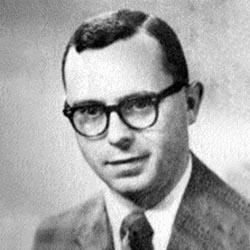 ROBERT KOHR
ROBERT KOHR
PhD 1962
Former professor, School of Mechanical Engineering, Purdue University
Robert Harvey Kohr was born in Washington, D. C. in 1925. He earned his B.S. and M.S. in Mechanical Engineering at the University of Michigan. Between 1954 and 1960 he worked at General Motors, concentrating chiefly on analysis and simulation of vehicle dynamics. He earned his Ph.D. in Mechanical Engineering at Purdue University in 1962 and achieved the rank of Professor in 1967. Robert Kohr's life was extraordinary, especially considering it ended tragically just as he was approaching the peak of his intellectual insight and vigor.
Robert Kohr was the consummate classroom professor. The courses he taught at Purdue attracted the best and brightest students, both undergraduate and graduate students. His meticulously-prepared lecture notes and articulate style made every class meeting a stimulating experience. He advocated the heuristic approach to problem solving, a philosophy that attracted undergraduate students to consider graduate school and graduate students to seek his commitment to mentor them through their studies and research.
Robert Kohr was an exemplary research adviser. He required of his doctoral students a solid background in mathematics and supporting course work from outside the School of Mechanical Engineering. He expected well-thought-out research proposals from candidates before initiating their thesis research. He demanded rigorous attention to facts and details. The success of his teaching, research and mentoring styles led several of his doctoral students to seek careers in the academic community.
Robert Kohr was a gentleman, devoted husband and father. He was respected by his students, colleagues and social and professional acquaintances as a man of high moral character, a loyal and trusted friend and a solid citizen. He died in a mid-air collision near Shelbyville, Indiana on September 9, 1969. He was 44 years old.
Two awards have been established in honor of Robert Kohr in the School of Mechanical Engineering at Purdue University, the Robert H. Kohr Award in recognition of Outstanding Work in Dynamics, Simulation and Automatic Controls in 1973, and the R. H. Kohr Graduate Student Fellowship in Mechanical Engineering in 2019.
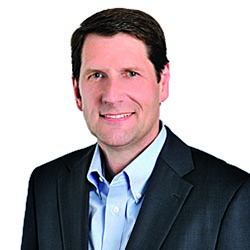 PETER KONIECZNY
PETER KONIECZNY
MSME 1990
Chief Commercial Officer, Amcor
Peter Konieczny is currently based in Zurich, Switzerland, working for Amcor: a global packaging company that develops and produces flexible packaging, rigid containers, specialty cartons, closures and services for food, beverage, pharmaceutical, medical-device, home and personal-care, and other products. The company employs more than 50,000 people and has revenues in excess of $13 billion from sales and operations in 200 locations in over 40 countries, including several locations in Indiana.
Peter joined Amcor in 2010 after six years as President of Silgan White Cap. In the latter part of that appointment, he was located at the company headquarters in Downers Grove, Illinois. Silgan White Cap manufactures and supplies consumer goods packaging products for the food and beverage industries. Peter previously held Chief Executive Officer and Chief Finance Officer positions in the heavy industrial equipment industry. In particular, he was Managing Director of Noell Cranes, directing their construction and installation of shipping port cranes in China. Prior to that he served as Assistant to the CEO of Preussag AG, a German steel company, which he joined after working for four years as a Management Consultant for McKinsey and Company.
Peter obtained his undergraduate degree in Mechanical Engineering from Leibniz Universität in his native Hannover before joining Purdue at the Ray W. Herrick Laboratories for two years, where he performed his MSME research on the optimal design of low-noise centrifugal blowers. That project was funded by IBM, and resulted in several well-cited publications and presentations, and he received the Institute of Noise Control Engineering Student Paper Award for his presentation of the work at the 1990 National Noise Control Conference. Peter also holds a Master of Business Administration from INSEAD in France.
 CHUCK KROUSGRILL
CHUCK KROUSGRILL
BSME 1975
Tebbe Family 150th Anniversary Professor, School of Mechanical Engineering, Purdue University
Charles M. Krousgrill received his bachelor’s degree in Mechanical Engineering from Purdue University in 1975 before going on to complete his M.S. and Ph.D. degrees from California Institute of Technology, Pasadena, CA in 1976 and 1980 respectively. Upon graduation from Cal Tech, he accepted a position as assistant Professor of Mechanical Engineering at Purdue University, West Lafayette, IN. He rose through the ranks and became Professor of ME in 1997 and currently holds the Tebbe Family 150th Anniversary Professor of Mechanical Engineering.
Professor Krousgrill is an exceptional researcher, who has led many research projects and has collaborated with many faculty members within Mechanical Engineering and at various other engineering schools at Purdue University. He has received more than $10.1M in research grants and contracts with his share more than 50% of this total. He has published over 100 journal and conference papers and has given many presentations in industry, government and international conferences.
However, Professor Krousgrill’s great impact in academia and true love is teaching and mentoring undergraduate and graduate students. He has excelled in educating students and is world renowned for his teaching contributions. Professor Krousgrill received the H. L. Solberg Best Teaching Award for the first time in 1985 and has won this award nine more times. He has won the A. A. Potter Best Teaching Award from the Purdue College of Engineering four times. In addition, Professor Krousgrill won the Charles B. Murphy Undergraduate Teaching Award, the highest teaching award at Purdue University in 1994. In 1999, he was inducted into Purdue’s Book of Great Teachers. He served as the cooperative education coordinator for more than 20 years in total. Furthermore, Professor Krousgrill has made exceptional teaching contributions to the development and contents of numerous courses at Purdue University, pioneering new teaching methods. On top of all of this, he has made lasting contributions by personally mentoring a large number of undergraduate and graduate students in the School of Mechanical Engineering.
 JAMES MCCARTHY
JAMES MCCARTHY
BSME 1990, MSME 1991, PhD 1995
Chief Engineer, Eaton Corporation
James’ career has been all about engines, starting at Detroit Diesel in 1995, and moving to Eaton Corporation in Kalamazoo, Michigan, where he has worked for the last 17 years. Specifically, he has led the charge for diesel cylinder deactivation, technology that selectively disables certain cylinders in a diesel engine to increase fuel economy, improve engine efficiency, and decrease carbon emissions. Government regulators are promoting diesel cylinder deactivation for 2027 emissions standards, while some customers may become early adopters in 2024.
In this capacity, he has worked closely with Purdue University’s Herrick Labs, who have a 7-year research program with Cummins for Advanced Engine Combustion and Aftertreatment Using Variable Valve Actuation. This investigation helped shape engine technologies that are most viable for upcoming emissions regulations while preserving/improving fuel economy.
James has built key relationships with government, industry, academia, and media, showing that Eaton is a trusted advisor for existing and new technologies. His executive leadership in the energy sector has led to conserving fossil fuels and reducing emissions by creating organic growth solutions through innovation, product development, intellectual property and publications.
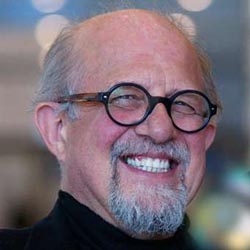 PINAR MENGÜÇ
PINAR MENGÜÇ
PhD 1985
Director of Center for Energy, Environment and Economy, Özyegin University
Professor M. Pinar Mengüç is an internationally known scholar in thermal transport, particularly in radiative transport. He received his BS and MS from ODTU/METU in Ankara,Turkey, and his PhD from Purdue University in 1985, supervised by Prof. Raymond Viskanta. The same year he joined the University of Kentucky (UK), and promoted to the ranks of associate and full professor in 1988 and 1993, respectively. He was a visiting professor at Università degli Studi di Napoli Federico II, Italy during 1991 and at Massachusetts General Hospital-Harvard University, Cambridge, Massachusetts, during 1998-99 academic year. He was awarded an Honorary Professorship at ESPOL, in Ecuador in 2006. At the end of 2008, he was promoted to Engineering Alumni Association Chair Professor at the University of Kentucky, which he still holds (as emeritus).
Professor Mengüç joined Özyeğin University, Istanbul in 2009 as the founding Head of Mechanical Engineering, a position he held until 2019. In 2009, he also established the Center for Energy, Environment and Economy (CEEE/EÇEM) which he is still directing. His current research areas include radiative transfer, nano-scale transport phenomena, applied optics and sustainable energy applications. He is an elected member of Science Academy of Turkey, a fellow of both ASME (American Society of Mechanical Engineering) and ICHMT (International Center for Heat and Mass Transfer), and a Senior Member of OSA (Optical Society of America). He is the recipient of several awards, including the 2018 ASME Heat Transfer Memorial Award, the highest award bestowed to individuals in heat transfer. In addition, with the Center (CEEE) he is directing, he received the First Place Award on ‘Efficiency’ from the Ministry of Industry and Technology of Turkey (in November 2019), and the First Place Award on ‘Energy Efficiency’ from the Ministry of Energy and Natural Resources of Turkey (in January 2020). Both awards were based on a Sustainable Energy project CEEE/EÇEM has completed, which was funded by European Union and was one of the largest grants received by any center in Turkey.
He is the author of more than 150 published articles, has co-authored more than 200 conference papers and two books. He has worked with more than 60 MS, PhD and Post-Doc researchers, and had more than 130 invited/keynote lectures delivered. He is a member of the executive committees of several NGOs, including ICHMT and Science Academy, Turkey. He is one of the three Editors-in-Chief of Journal of Quantitative Spectroscopy and Radiative Transfer (JQSRT), a Handling Editor of Physics Open, and Honorary Editor of Journal of Enhanced Heat Transfer. He was the Turkish delegate to European Union for Energy Programs (2010-2016), and a delegate of Turkey to Climate Change Conferences (COP, 2010, 2019).
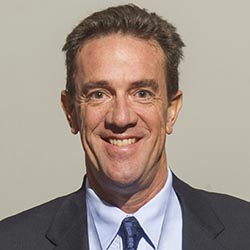 PAUL BACKES
PAUL BACKES
MSME 1984, PhD 1987
Group Supervisor, Robotic Manipulation and Sampling, NASA Jet Propulsion Laboratory
Paul Backes learned robotics while earning his Masters and Ph.D. degrees in Mechanical Engineering at Purdue University, after completing his BSME at UC Berkeley. He joined NASA’s Jet Propulsion Laboratory after completing his Ph.D. in 1987 and has been developing robotics technologies and applying them for NASA and other sponsor applications throughout his career.
In his current role, Paul leads a group that develops robotic manipulation and sampling autonomy and software for NASA missions. His group provided the robotic arm and sampling algorithms and on-board software for the 2007 Mars Phoenix mission, and the currently-operating 2011 Mars Science Laboratory, 2018 Mars InSight, and Mars 2020 missions. His group is currently developing the manipulation algorithms and software for the planned COLDArm and Mars Sample Return Lander missions. Also, Paul currently manages technology development for future potential missions including a sampling system for a potential Enceladus Lander life detection mission and manipulation and sampling autonomy for a potential Europa Lander mission.
Paul has published three book chapters, 20+ journal articles, 100+ conference papers, and holds 8 patents. He has received significant recognition for his contributions including NASA Exceptional Engineering Achievement Medal (1993), World Automation Congress Best Paper Award (1994), JPL Award for Excellence (1998), NASA Software of the Year Award - Sole Runner Up (1998), NASA Software of the Year Award (2004), IEEE Robotics and Automation Technical Field Award (2008), and NASA Exceptional Service Award (2014).
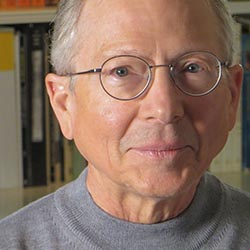 ROBERT BELLEVILLE
ROBERT BELLEVILLE
BSME 1968, MS 1969, PhD 1974
Engineering R&D and Management, Retired
Stanford Research Institute, Xerox Palo Alto Research, Apple Computer
As a midwestern child of the Sputnik generation, Robert Belleville was raised with the call to “build for the future.” He started at Purdue in 1964, receiving his BS and MS before being drafted into the US Army in 1969. In 1971 he joined Richard Garrett's pioneering Computer Aided Design lab to complete his Ph.D. With David Anderson and the other lab members he built both software and hardware for the emerging CAD world. He developed and taught Purdue's first class in computer graphics and built one of the world’s first digital cameras: a 1-pixel color scanner.
Hearing the call of the West, he settled in Northern California’s Silicon Valley, where he enjoyed a career that tracked the leading edge of the emerging computer industry. He joined Doug Engelbart's Augmentation Research Center at SRI and added computer graphics to that system. He built his first personal computer and graphics plotter, both of which are now on display in the Computer History Museum in Mountain View, California. Moving to Xerox's famous research center in 1977, he built software and hardware for what would soon be known as the Personal Computer industry and managed the group that developed one of the first high-powered information workstations: the Xerox Star.
Intrigued by Bob’s work at Xerox, Steve Jobs recruited him to lead his Engineering teams for a new project: the Macintosh. During his time at Apple, Bob directed both hardware and software for the original 1984 Macintosh and was instrumental in the invention and production of the Apple Laser Printer and AppleTalk Network.
After Apple, he continued to push the boundaries of computer science as a member of Engineering Research teams at Siemens, 3Com, and Silicon Graphics, where he was a pioneer in areas of Telephony, Search and Indexing, and Computer Linguistics. He retired from the computer industry in 1998.
As life-long explorer of how things work, Bob’s post-retirement passion has led him on a multi-decade search to understand the measurement of time, resulting in him building sundials, astrolabes, and a series of highly accurate (millisecond range) pendulum clocks. His work in this area has been published in the Horological Science Newsletter Journal. His latest “clock” tracks and displays, with the help of robotic hands-of-God, the position of the stars and planets through time. He has also expressed his unusual way of seeing the world through photography. Starting in black-and-white with a large-format 8x10 camera, he now enjoys exploring the latest advancements in digital cameras and image editing software. Perpetual curiosity defines Bob, a man who never stops wondering “how does this work, exactly?”
 ROBERT CESS
ROBERT CESS
MSME 1956
Professor Emeritus, Atmospheric Science, Stony Brook University
Robert Cess is a recognized leader in the fields of climate change and atmospheric radiation transfer. His research interests involve modeling of climate feedbacks that can either amplify or diminish global climate change, and interpreting surface and satellite remote sensing data.
He earned a BS from Oregon State, an MS from Purdue, and a PhD from the University of Pittsburgh, all in mechanical engineering. He began teaching at the State University of New York at Stony Brook in 1960, and continued there for more than 40 years.
His research focuses on atmospheric science, building and testing quantitative models. In the 1980s, he designed an experiment to verify models of the transmission of shortwave radiation through a cloud-free atmosphere, confirming that models matched the observations. He was a lead author of the Intergovernmental Panel on Climate Change and worked with the National Science Foundation on understanding greenhouse warming and its associated policy implications.
He also studied the acquisition and interpretation of both surface and satellite radiometric data. He was involved with NASA’s Earth Radiation Budget Experiment; their subsequent Clouds and the Earth’s Radiant Energy System, which is part of the Earth Observing System; and DOE’s Atmospheric Radiation Measurements Program. The focus of these observational programs is to obtain a better understanding of how clouds impact climate change.
He has lectured around the world, and won numerous awards, including NASA's highest scientific honor, the NASA Exceptional Scientific Achievement Medal in 1989. He is a fellow of the American Meteorological Society, and in 2006, received their Jule G. Charney Award in recognition of significant research in the atmospheric or hydrologic sciences. In 2007, the Intergovernmental Panel on Climate Change (in which Cess played a major role) collectively received the Nobel Peace Prize.
 CHARLES CROSS
CHARLES CROSS
MSME 1992, PhD 1998
Chief, Turbine Engine Division, Air Force Research Laboratory
Charles Cross is the Chief of the Turbine Engine Division, Aerospace Systems Directorate, Air Force Research Laboratory, Air Force Materiel Command, at Wright-Patterson Air Force Base in Dayton, Ohio. In this capacity, he leads a 300-person division in executing a $110,000,000 per year budget to plan, develop and transition advanced gas turbine engine technologies in order to sustain legacy military systems, develop emerging systems, and enable future propulsion concepts. To fulfill this mission, he is the Tri-service lead for the Advanced Turbine Technology for Affordable Mission Capability (ATTAM) initiative, ensuring USAF efforts are coordinated across all Department of Defense services and other federal agencies.
Dr. Cross has been with the Air Force Research Laboratory and its predecessor organizations since 1989. His multi-faceted technical activities have included serving as an in-house researcher, team lead, group lead, program manager, branch chief, consultant, mentor and technical investigator for basic research in structural dynamics, life prediction and failure analysis of gas turbine engine components. He is an internationally recognized expert in turbine engine dynamics, mechanics and durability. Dr. Cross has led numerous national and international teams to investigate costly gas turbine engine fatigue and structural dynamics issues, leading to the resolution of problems that plagued fielded military engine systems for years. If it’s a gas turbine engine in the United States Air Force inventory, he has worked on its design, development or sustainment.
Dr. Cross received a Bachelor of Mechanical Engineering from the University of Dayton in 1991, and his Masters of Science and Doctor of Philosophy in Mechanical Engineering from Purdue University in 1992 and 1998 respectively. He is a Fellow of the American Society of Mechanical Engineers (ASME), a Fellow of the Air Force Research Laboratory and an Associate Fellow of the American Institute of Aeronautics and Astronautics (AIAA). Dr. Cross has been the recipient of the ASME International Gas Turbine Institute (IGTI) Aircraft Engine Technology Award and the AIAA Hap Arnold Award for Excellence in Aeronautical Program Management.
 NISHI GUPTA
NISHI GUPTA
MSME 1984
Associate Director, Change Logic
Nishi Gupta is an accomplished executive with expertise in business strategy & transformation, portfolio management, and product development. She has extensive experience in driving revenue growth by creating and bringing new products and services to market. She has consistently delivered on revenue, profit, and customer commitments by fostering innovation and establishing cross-functional, high performance teams.
At Change Logic, Nishi helps firms innovate beyond their core business to build new capabilities and offerings. Before joining Change Logic, Nishi spent 32 years at IBM and held various engineering and business roles. As the VP of portfolio strategy in Infrastructure Services, she created the offerings strategies for Internet of Things market and Digital Commerce channel. In Strategic Outsourcing Delivery, her team created the business analytics platform used to identify operational improvements such as software spend reduction and server refresh. In Technology Support Services division, she was the VP for strategy & portfolio and helped drive growth via new services and delivery model. When she was in business management consulting, she led teams in delivering client value on e-business transformation, process design, and organizational change management. She also worked in product development and manufacturing engineering in multiple product divisions including storage and networking hardware.
Nishi obtained her undergraduate degree in Mechanical Engineering from Pennsylvania State University before joining Purdue at the Ray W. Herrick Laboratories for two years, where she performed her MSME research on the transient motion of compressors.
 ALAN KENNEDY
ALAN KENNEDY
BSME 1969
Senior Patent Attorney, National Aeronautics and Space Administration (retired)
Originally from Kokomo, Indiana, Alan enrolled at Purdue in 1963. He became the first black student to work with Purdue’s Cooperative Engineering Education Program (founded a decade earlier by Mechanical Engineering professor Frederick Morse). He alternated semesters between classes at Purdue and working at Haynes Stellite in Kokomo.
After graduating, he worked as a design engineer at GE’s Appliance Park in Louisville, Kentucky. When the company’s patent attorneys taught him how to keep his lab notebook, he decided to pursue patent law. He transferred to GE’s facility in Columbia, Maryland, and attended law school at the University of Maryland at night.
After finishing his law degree, Alan stayed in the Washington area, working as a patent attorney for Xerox and for the US Army. Then he joined NASA, working at Goddard Space Flight Center in Maryland for two years, before being promoted to senior patent attorney at NASA Headquarters in Washington, DC. Alan coordinated a team of attorneys across all NASA facilities to defend NASA’s intellectual property rights, and conduct discovery for infringement lawsuits. He also defended NASA’s logo and trademark, in particular working with the producers of big Hollywood films like Armageddon, Deep Impact, and Apollo 13 to ensure they were in compliance with NASA guidelines.
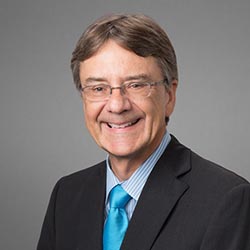 JIM OVERMAN
JIM OVERMAN
BSME 1980
Vice President, Business Management, Shell Oil Company (retired)
Jim is an accomplished business, operations, and implementation leader with 40 years of experience in the downstream energy sector. Jim retired from Shell Oil Company in 2019. He started with Shell as a plant support engineer straight out of Purdue, before moving into operations management roles. He progressed to Refining Operations Superintendent then transitioned into refinery business management. Jim concluded his career with Shell as Vice President of Business Management for the Deer Park Refining Limited Partnership (DPRLP), a joint venture between Shell Oil Company and P.M.I. Norteamerica S.A. de C.V. (a subsidiary of PEMEX).
Jim has extensive experience in strategy development, strategy implementation, and benefits realization holding positions such as strategy advisor, business opportunity manager, and business lead for a global ERP system implementation. Jim enhanced his manufacturing background with leadership roles in hydrocarbon supply and trading (Supply Operations Manager), commercial marketing (eCommerce Director), and technical IT systems (VP Programmes). Since retiring from Shell, Jim has stayed active engaging in both professional and volunteer consulting.
Jim received his BS Mechanical Engineering from Purdue (1980) and his MBA from University of Houston-Clear Lake (1983). He is currently on the Board and serves as Treasurer of Bay Area Turning Point, Inc., a non-profit advocating to end sexual and domestic violence. Jim was recently elected to represent the Central Region on the Purdue Alumni Association Board of Directors. Jim additionally volunteers with SCORE (Service Corps of Retired Executives) and ESCH (Executive Service Corps Houston) advising small businesses and non-profits in developing robust business plans to achieve their goals. Jim and wife, Diane, also a proud Boilermaker (BSIM 1980), split their time between Houston and Galveston and have two adult children, Catherine (Chicago, IL) and Michael (New Orleans, LA).
 JIM RAU
JIM RAU
BSME 1969, MSME 1971
Chief Executive Office and Owner, J L Rau and Associates, LLC
Jim Rau has over 50 years in the automotive business with TRW Inc. (now ZF), including varied business units and consultation advisory roles. He started his career as a co-op student with International Harvester’s Motor Truck Division in 1965, and moved on to the Ross Gear division in 1969. He worked with multiple divisions on multiple products, including Commercial Steering Systems and Passenger Car Steering. He also served as technical support for TRW’s license agreements with the German company ZF, before their merger in 2014. He is currently Executive Advisor to ZF; operating from his consulting company J.L. Rau & Associates LLC.
Jim has participated in many TRW new business development plans, start-ups, and joint ventures around the globe. He chaired TRW’s Technical Board for 2 years as honorary CTO. Now retired from TRW, Jim remains involved in the growth of the automotive industry with ZF.
At Purdue, Jim supports the School of Mechanical Engineering, Cooperative Education Program, and Student Athletics Scholarship Programs. He is also involved the Global Engineering Alliance for Research and Education (GEARE), which enables engineering students to study and work abroad.
 NORMAN THOMAS
NORMAN THOMAS
BSME 1982
Deputy to the Commander, Crane Army Ammunition Activity | The United States Army
Norman Thomas’ federal career spans 38 years in ammunition manufacturing, maintenance, logistics, engineering and management. He started his professional career at Crane Army Ammunition Activity in Crane, Indiana as a Project Engineer in 1983 working in Gun Ammunition, Demilitarization, Renovation, Maintenance, and Pyrotechnics. In March 1988, Norman was promoted to Division Chief of Industrial Operations Technical Division where he was responsible for the development of Quality Control Instructions and Standing Operating Procedures. In October 1989, he was promoted to Division Chief of Industrial Operations Engineering Services where he provided oversight, management and control over all Project Engineers and engineering processes including Military Construction / Minor Construction Projects and environmental programs. In December 1998, Norman was promoted to Director of Engineering where he added the responsibility of Machine Shop Operations, Strategic Planning and Marketing for third party work.
In October 2002, he was assigned as Director of Manufacturing and Engineering where he combined Engineering and Production processes to improve efficiencies on all programs including such programs as the Add on Armor (AOA) kits for the HMMWV/ M939 5 Ton Truck and the Decoy Flare production. Norman has also been temporarily assigned as Director of Depot Operations. In June 2007, Norman became Crane Army’s first Chief of Staff. In February 2010, he became the Civilian Executive Assistant (now Deputy to the Commander).
He first graduated from Indiana Vocational Technical College with a Technical Certificate in Heating and Air Conditioning, and then earned a BSME at Purdue University. He received a Public Management Certificate from IUPUI, and completed The Institute for Defense and Business’ Depot and Arsenal Executive Leadership Program from the Kenan-Flagler Business School at the University of North Carolina, Chapel Hill. Norman is a member of the Army Acquisition Work Corps.
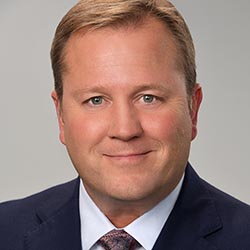 BRAD TOLLEY
BRAD TOLLEY
BSME 1994
President, Shiloh Industries
Brad Tolley is the president of Shiloh Industries in Plymouth, Michigan: a global supplier of lightweighting, noise and vibration solutions for the automotive industry. He is responsible for the company’s strategic direction, business development, and operations execution globally, and serves as director for several of the company’s overseas enterprises.
Tolley joined Shiloh in January 2014 as the vice president, strategy & market development. During his tenure, his responsibilities have included leading operations, engineering, sales & marketing and corporate development. He has been instrumental in nearly every aspect of Shiloh’s transformation from a US-centric, process-focused automotive supplier into a $1.1B global, product-focused company, expanding operations in Mexico and into Asia and Europe.
Tolley began his automotive career in 1994 in various engineering and operations roles with Ford Motor Company as part of their Ford College Graduate Program. Prior to Shiloh, he held various leadership roles of increasing responsibility with Visteon Corporation and Varroc Lighting Systems.
Tolley holds an MBA from Oakland University with a focus on marketing and economics, and a bachelor of science in mechanical engineering from Purdue University. Having grown up in northwest Indiana, he and his wife, Julie, reside in Northville, Michigan.
